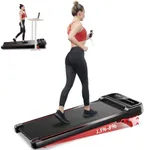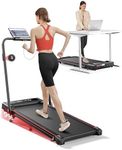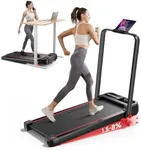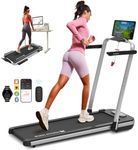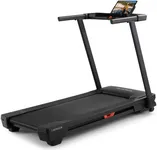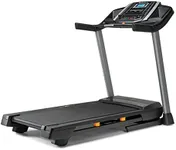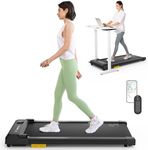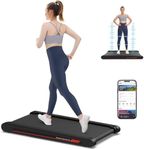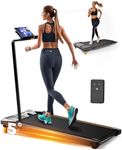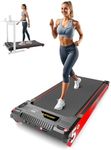Buying Guide for the Best Walking Treadmills
Choosing the right walking treadmill can make a big difference in your daily exercise routine. The best treadmill for you will depend on your available space, how often you plan to use it, and what features matter most for your comfort and motivation. Before you start shopping, think about where you’ll put the treadmill, how much you’ll use it, and whether you want any special features like tracking your progress or entertainment options. Understanding the key specifications will help you narrow down your choices and find a treadmill that fits your lifestyle and needs.Motor Power (Horsepower/HP)Motor power tells you how strong the treadmill’s engine is. For walking, you don’t need as much power as for running, but a stronger motor can mean smoother operation and longer lifespan. Motors are usually rated in horsepower (HP). For light walking, a motor with 1.5 to 2.0 HP is usually enough. If you plan to walk frequently or want a treadmill that can handle heavier use, look for 2.0 HP or higher. If you’re a heavier user or want to use the treadmill for longer sessions, a higher HP will be more reliable and quieter.
Belt Size (Walking Surface)The belt size is the area you walk on, and it’s important for comfort and safety. A wider and longer belt gives you more room to move naturally. For walking, a belt that’s at least 16 inches wide and 45 inches long is usually comfortable for most people. If you’re taller or have a longer stride, look for a longer belt. If space is tight or you have a shorter stride, a smaller belt may be fine. Always make sure the belt feels comfortable for your natural walking motion.
Speed RangeThe speed range tells you how fast or slow the treadmill can go. For walking, most people are comfortable with speeds between 0.5 and 4 mph, but some treadmills go up to 6 mph or more. If you only plan to walk, a lower top speed is fine. If you want the option to do brisk walking or light jogging, look for a treadmill with a higher maximum speed. Think about your fitness goals and pick a speed range that matches how you want to use the treadmill.
Incline OptionsIncline lets you tilt the treadmill to simulate walking uphill, which can make your workouts more challenging and help you burn more calories. Some treadmills have manual incline, which you adjust by hand, while others have automatic incline you can change with a button. If you want to add variety or intensity to your walks, look for a treadmill with incline options. If you prefer flat walking, this feature may not be as important.
CushioningCushioning refers to how much shock absorption the treadmill provides. Good cushioning can reduce the impact on your joints compared to walking on hard surfaces. Some treadmills have adjustable cushioning, while others have a fixed level. If you have joint concerns or want a softer feel, look for a treadmill with better cushioning. If you’re used to walking outdoors and don’t have joint issues, this may be less important.
Foldability and StorageFoldability is about whether the treadmill can be folded up to save space when not in use. This is especially important if you have limited space at home. Some treadmills fold flat and can be stored under a bed or against a wall, while others are bulkier. If you need to move or store your treadmill often, look for a lightweight, foldable model. If you have a dedicated space, this feature may not matter as much.
Display and ControlsThe display shows your workout information like time, speed, distance, and calories burned. Controls let you adjust speed, incline, and other settings. A clear, easy-to-read display and simple controls make your workouts more enjoyable and help you track your progress. If you like tracking your stats or want preset workout programs, look for a treadmill with a more advanced display. If you prefer simplicity, a basic display will do.
Weight CapacityWeight capacity is the maximum user weight the treadmill can safely support. It’s important for safety and durability. Most walking treadmills support between 200 and 300 pounds, but some go higher. Always choose a treadmill with a weight limit above your current weight to ensure safe and reliable use.

